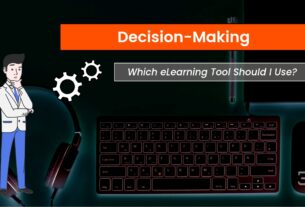Table of Contents
SCORM, or Sharable Content Object Reference Model, is a set of technical standards that governs how eLearning content and Learning Management Systems (LMS) communicate. It ensures interoperability, meaning SCORM-compliant content can be used across different SCORM-compliant LMSs without compatibility issues.
SCORM was developed by the Advanced Distributed Learning (ADL) Initiative in the early 2000s to create a standardized framework for delivering eLearning content.
The History and Evolution of SCORM:
The Development of SCORM by the ADL Initiative:
SCORM was developed by the Advanced Distributed Learning (ADL) Initiative, a program launched by the United States Department of Defense (DoD) in 1997. The ADL’s mission was to create a unified approach to delivering and managing online training and education.
The Need for SCORM:
Before SCORM, eLearning content often lacked compatibility between systems. Different Learning Management Systems (LMSs) used proprietary formats, making it difficult to reuse or transfer courses across platforms. This created inefficiencies, such as:
Duplicating efforts to create content for each LMS.
Inconsistent tracking and reporting capabilities.
High costs associated with custom integration.
The ADL Initiative recognized the need for a standardized framework to address these challenges.
Goals of SCORM:
Interoperability: To ensure eLearning content could function seamlessly across any SCORM-compliant LMS.
Reusability: To allow learning modules to be reused across multiple contexts without modification.
Durability: To ensure content remained functional despite changes in technology or LMS platforms.
Accessibility: To enable learners and organizations to easily access and distribute content.
Development Timeline:
1997 : The ADL Initiative was established by the DoD to promote a common framework for eLearning.
2000 : SCORM 1.0 was released as a proof-of-concept, showcasing how standards could enable content and systems to work together.
2001 : SCORM 1.2 was released, becoming the first widely adopted version. It introduced better tracking and communication between content and LMSs.
2004 : SCORM 2004 was launched, incorporating advanced sequencing and navigation features, which allowed for more complex course structures and adaptive learning paths.
SCORM remains a cornerstone of eLearning due to its pivotal role in shaping how content is developed, delivered, and tracked. The ADL Initiative’s work has transformed training and education across industries, setting the stage for future advancements in eLearning technology.
Components of SCORM:
Content Packaging:
SCORM packages content into a compressed ZIP file, known as a Package Interchange File (PIF). This package contains all the course files, including multimedia, scripts, and metadata, enabling easy upload to an LMS.
Run-Time Environment:
SCORM defines how content communicates with the LMS while learners interact with it. For example, it sends information like:
Progress tracking (e.g., course completion percentage).
Quiz results (e.g., scores and pass/fail status).
Time spent on the course.
Sequencing:
SCORM establishes rules about the order in which learners access course components. For example, learners may need to complete Module 1 before proceeding to Module 2.
Use Cases for SCORM:
SCORM is widely used in various domains for creating eLearning content, including:
Corporate Training: For employee onboarding, compliance training, and skill development.
Educational Institutions: To deliver online courses and track student performance.
Certification Programs: To create and distribute courses with certification options.
Microlearning: For short, focused learning modules.
SCORM-Compatible Tools:
Numerous authoring tools support SCORM-compliant content creation. Popular tools include:
ActivePresenter: Known for its versatility in creating interactive content.
Articulate Storyline: A powerful tool for designing multimedia-rich courses.
Adobe Captivate: Ideal for creating responsive, simulation-based content.
iSpring Suite: User-friendly for converting PowerPoint presentations into SCORM courses.
Lectora: Offers flexibility for creating custom eLearning experiences.
Creating a training lesson:
A lesson was created using ActivePresenter to help employees learn how to use Odoo software and how to create a new product. This lesson can be exported to multiple formats, including SCORM, but here we uploaded it in HTML5 format.
Challenges with SCORM:
Despite its advantages, SCORM has some limitations:
Complexity: Developing SCORM-compliant content requires technical expertise.
Limited Interactivity: While SCORM supports basic interactivity, it may not accommodate advanced features like those found in xAPI.
Dependence on LMS: SCORM content relies on an LMS for tracking and reporting, limiting its functionality outside an LMS environment.
SCORM has been a game-changer in the eLearning industry by providing a standard that ensures interoperability, reusability, and effective tracking. Understanding its features and limitations is essential for educators, instructional designers, and organizations looking to maximize their eLearning programs. While newer standards are gaining traction, SCORM remains a cornerstone for many LMS platforms and eLearning projects.






